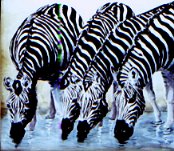We saw lots of different antelope at Mombo Camp--the usual impala, kudu, etc., but also, found only in the Okavango area, the red lechwe and the elusive sitatunga. We didn't see the sitatunga this time, but were lucky enough in '98 to have seen this nocturnal antelope. First, here are some impala:
Mature impala buck
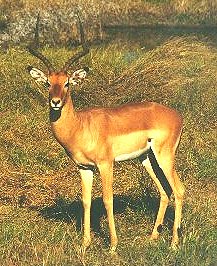
Baby impala buck--see the teeny horns
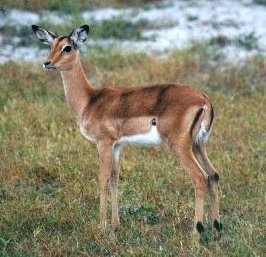
Impala buck scent marking
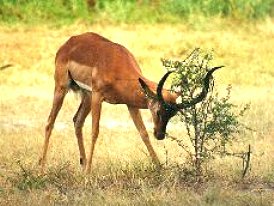
Impala buck profile--sorry I cut off the horns, but I did get
the "catch light" in the eye!
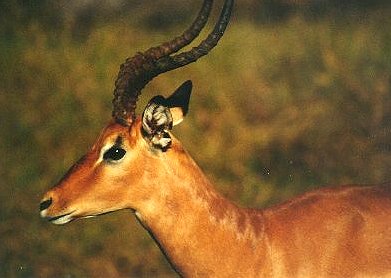
Impala ewes. The M pattern on their
rears is for the young to follow, but the rangers say it stands for Macdonald's
since the impala is the fast food of choice for most predators. The one on
the left doesn't think that's funny apparently.
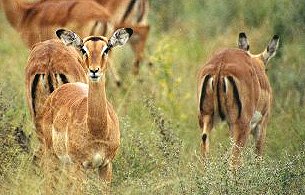
Here are the red lechwe (letch'-way or
-wee) for comparison. They are just a little larger and the markings are
similar, but not so distinct. They are higher in the rear and have splayed
hooves for running through the marshes. Also note that their horn tips
face forward to fend off enemies approaching from the land into the marsh.
So do waterbok and sitatunga horns. Impala and other plains species have
horn tips facing to the rear to hurt enemies jumping on their backs. At
least that's what they told us. It seems logical.
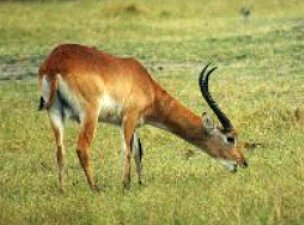
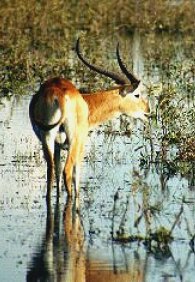
And here are a couple of kudu too.
The males are magnificent and the females beautiful. I love the ears on
the females--they can listen in two directions at once.
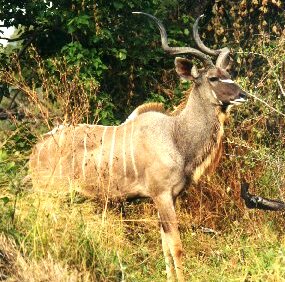
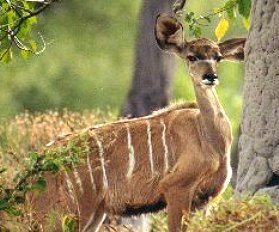
A few more birds are next.
